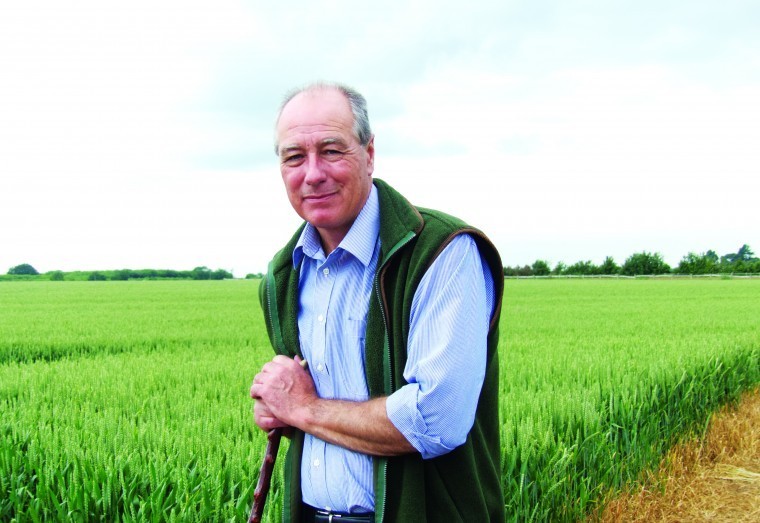Messrs Johnson and Gove looked stunned, the Governor of the Bank of England looked serious and the currency and share markets fell. Loads of ordinary people watched commercial and residential transactions stall and pensions shrinking. To give certainty to his position the prime minister we elected last year promptly gave a resignation speech to be effective in October.
The Labour Party was obviously missing out so a couple of MPs decided to move a vote of no confidence in their leader Jeremy Corbyn. A statement of the blindingly obvious that normally would have caused little more than merriment but certainly added to the uncertainty on the day. Nicola Sturgeon saw the opportunity to breathe new life into a second Scottish Independence referendum and went for it when a period of quiet contemplation might have been more sensible.
Amidst all of this Europe got on with business as usual and once again declined to re authorise glyphosate. Just as they refused to offer any solution on immigration when Cameron desperately needed a deal. Well we will be leaving some of that nonsense behind, albeit replacing it with uncertainty.
So where does all of this leave farming? Well next week the decision will be history and everyone will look forward to the future and start work on delivering a new relationship. Much will depend on what basis we continue to trade with Europe. Both the European economic area and European free trade area have the four freedoms as a fundamental and it is difficult at the moment to see how free movement of labour can be reconciled with the leave result because it was immigration that was key to most people’s leave decision. The only alternative will be based on World Trade Organisation treaty terms and that will be challenging for farming. Clearly large sectors of our economy cannot function without migrant labour from Europe so horticulture may well have allies in the battle to secure sufficient labour and that will be fundamental to the future trading relationship with Europe.
For arable crops it will still be world prices we have to contend with. On the regulation front among other issues a better system for authorising plant protection products based on risk rather than hazard with science the arbiter must be a key aspiration. We then come to the support side of the equation and whether we will see anything to replace the basic payment scheme in a British agriculture policy.
If we are competing with Europe on our doorstep in or out of the single market and contending with low world prices then it would be good to see something on the table. But we know that for years all of the main British political parties have been in favour of phasing the common agricultural policy out as soon as possible. That means substantial cost reduction is the only other route and structural change in British agriculture would be inevitable. However one looks at livestock it faces a very difficult future without single market access.
In the practical world it has been wet throughout June and we will reach 100 millimetres of rain in north Kent. Others will be far in excess of that if they have suffered one of the cloudbursts. Despite that, wheat crops continue to show big potential and will not run out of moisture although a spell of sunshine is desperately needed. Disease has been held at bay not least because the rapid May growth saw T1, T2 and T3 fungicides all go on to crops in six weeks, giving good cover.
There is some ear disease showing, started by anthers that have stuck to glumes, despite nearly full rates of T3 sprays being applied. Blackgrass is all too obvious especially in first wheat after winter oilseed rape and winter beans. It is generally in patches and stems from uneven break crop establishment leading to poor crop competition in those winter crops. Overall the break clearly benefits blackgrass levels but these patches undermine the long term control. The only solution has been to spray the patches off with glyphosate. Perversely with second wheats if they have followed good grass weed control in the first wheat slot, they are generally clean as well.
Of the other crops oilseed rape is moving on with variable disease but I remain of the opinion that there are few good crops to be seen and doubt we are going to be surprised at harvest. Clearly the wet weather is helping spring crops. There is a lot of lush growth in barley and beans. Disease wise chocolate spot in beans is a real concern and will be difficult to control if the weather continues as it is.
However compared with last year’s prolonged spring drought there is good potential. I mentioned that we had fallowed one area of land with high blackgrass populations and it continues to see blackgrass germinate. It will be interesting to see what appears in the autumn when we drill a wheat crop. All I can say is we have killed a lot of blackgrass during the last 10 months and applied a lot of glyphosate.
Finally an update on our bird population at Down Court. Once again we have breeding pairs of barn owls and kestrels in our two owl boxes. The kestrels are just about to fledge and the adults are obvious hunting all day long. The barn owls are a little behind in comparison but from early evening the adults can be seen hunting across nearby margins and grass fields. They are an amazing sight.




